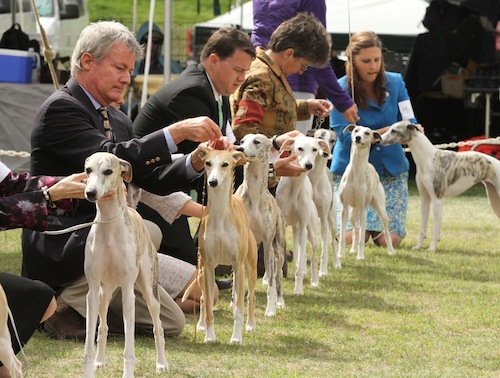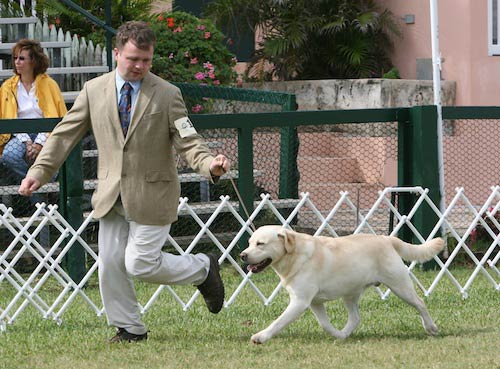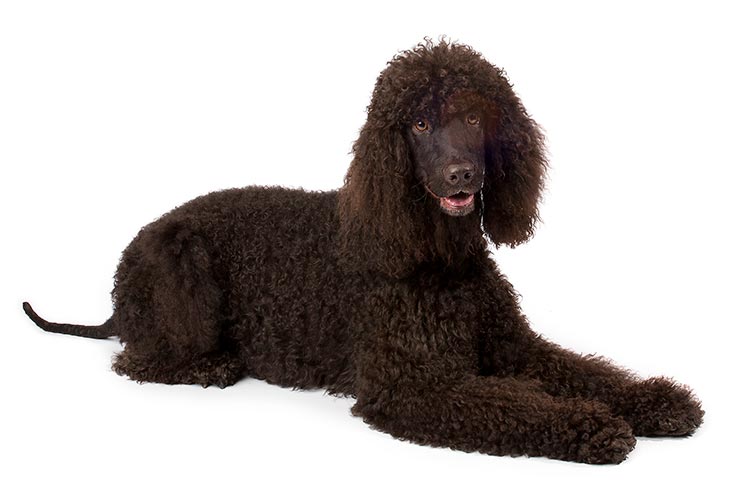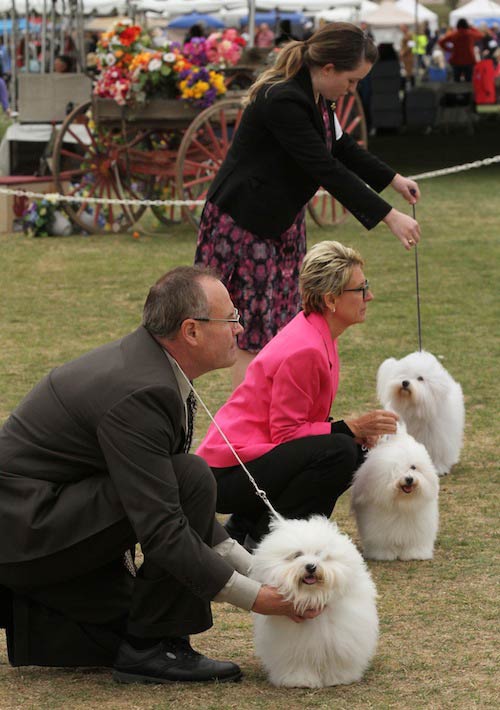Developing an eye for assessing dogs is like any other skill. You need basic understanding of what you are looking at, and then you need practice. The more you train your eye to look for variations, good and bad, the better you will become at evaluating a dog or group of dogs.
Start with reading the breed standard. The more you can familiarize yourself with what the “ideal” dog should look like, the more successful you will be when given the opportunity to apply the standard to a dog or group of dogs.
1. Look for good qualities

Start by looking for good points. As there is no such thing as a perfect dog, if you start by looking for faults, you will find them in any dog. It is more important to learn to find what is good in a dog, as you then have that perspective.
Exercise: Pick a class at the show, and find two things about every dog in the class that you feel really is a good example of the breed standard. Place the dogs based on which dog has the strongest breed attributes. How did your placements line up with the actual placements?
2. Look at movement

The standard is written with the intent that a dog so built can do the job it was bred to do. A good part of function is movement.
Exercise: Pick a class at the show, and study and compare the movement of the dogs in that class. Try to position yourself so you can see the dog coming at you, moving away from you, and going around to evaluate side movement. What did you like about the movement? If there was something that did not appear to be right, can you identify why the dog moves the way it does? Do you feel that the dog could function at the task he was bred to do? Place the dogs based solely on movement. How did your placements line up with the actual placements?
3. Assess breed type

To evaluate a dog, you must understand that type is a part of being that breed. It is what distinguishes the breed from other breeds. Part of that is knowing the size the standard calls for. Another part is understanding the silhouette or “outline” of the breed.
Exercise: Pick a class at the show, and see if you can guess the height and weight of the dogs in the class. Then rate the dogs on just their outlines, both standing and moving. Place them based solely on type. How did your placements line up with the actual placements?
4. Consider: Does presentation matter?

Judges have a limited amount of time to make their decisions. Presentation of the dogs can and does have an impact on their decisions.
Exercise: Pick a class, and just look at presentation of the dog. That would include grooming and how well the dog is handled and presented to the judge. Is the dog ready when the judge looks? On the go-round, is the dog moving well during the window of time the judge is looking? If you were placing the dogs, would the overall presentation affect your final decision?
If you have placed the dogs using only one of the given criteria, your placements may not line up with what actually happens in that class. That could be because all four areas must be considered for every class. Practice the pieces, with the goal of being skilled to apply all areas when evaluating an individual dog or a show class.
From the Irish Water Spaniel breed column in the October 2015 AKC Gazette
Colleen McDaniel is the breeder of BIS/BISS GCh. Whistlestop’s Riley on Fire, who currently holds the record as the Irish Water Spaniel with the most U.S. Best in Show wins.
To learn more about the Irish Water Spaniel, check out the breed pages, and visit the website of the breed’s national parent club, the Irish Water Spaniel Club of America.
For more on assessing dogs in the show ring, see Dog Show Judges Use a Range of Techniques in Evaluating Dogs. You might also be interested in:


